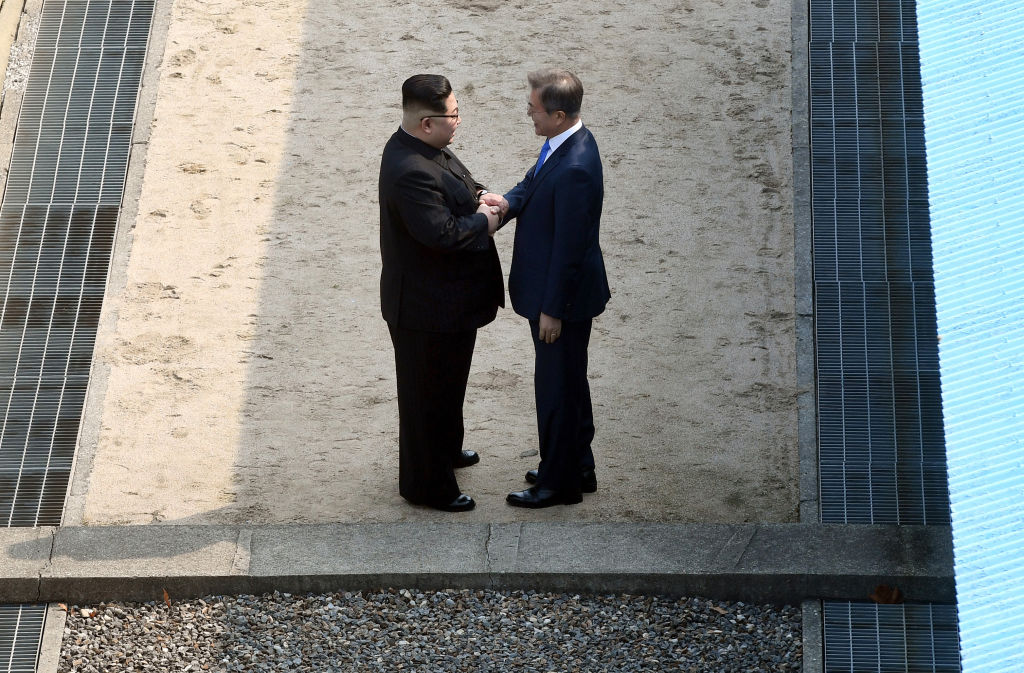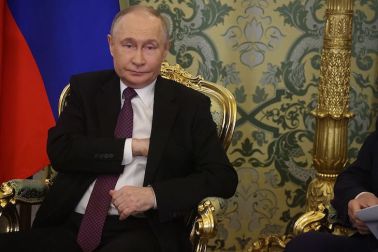After spending most of his presidency posing a nuclear-armed hothead, Kim Jong-un is now presenting himself as a man of peace. ‘I came here to put an end to the history of confrontation,’ he said on his historic visit to South Korea. Which might be so. But his real agenda may be to gain acceptance for North Korea’s status as a nuclear power: holding an olive branch in one hand, and a seven-kilotonne bomb in the other.
The visit to the south comes ahead of his trips to meet Donald Trump, who has referred to Kim Jong-un as a ‘little rocket man’ and tweeted a photo boasting that his own nuclear button was larger and more effective than that of the North Korean leader. Yet sometime over the next six weeks the two men will confound those who saw them as warmongers intent on bringing the world to the brink of nuclear conflict by meeting in a yet-to-be disclosed location — ending two decades in which US-North Korean dialogue has been virtually nonexistent.
There are parallels in modern history of US presidents who started their terms in office accused of recklessness in world affairs, only to end up making diplomatic breakthroughs which had eluded apparently more conciliatory predecessors. It was Nixon, not Kennedy or Johnson, who normalised US relations with China; Reagan, not Carter, who achieved disarmament with the Soviet Union. To rattle sabres before making unexpected overtures for peace has become established as a tactic of Republican presidents.
Yet it should not be assumed that Trump’s meeting with Kim Jong-un will be as successful. On the contrary, it could all too easily backfire as the President, too eager to tweet that he has persuaded a bellicose Kim Jong-un to down his weapons, fails properly to read North Korean intentions.








Comments
Join the debate for just £1 a month
Be part of the conversation with other Spectator readers by getting your first three months for £3.
UNLOCK ACCESS Just £1 a monthAlready a subscriber? Log in